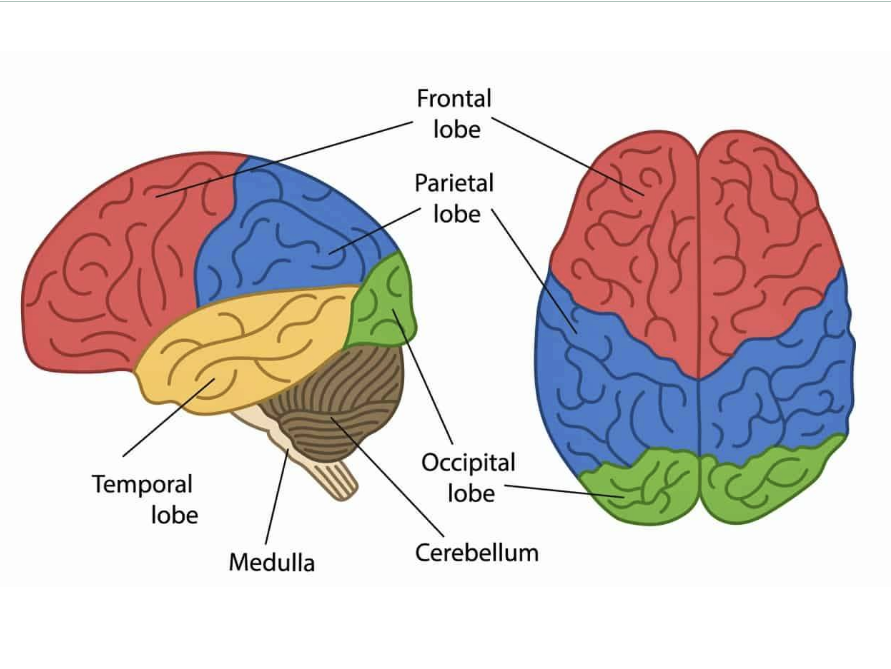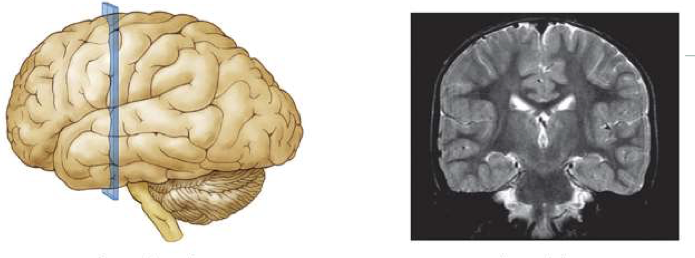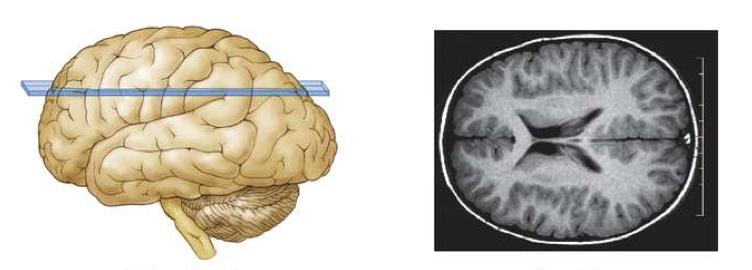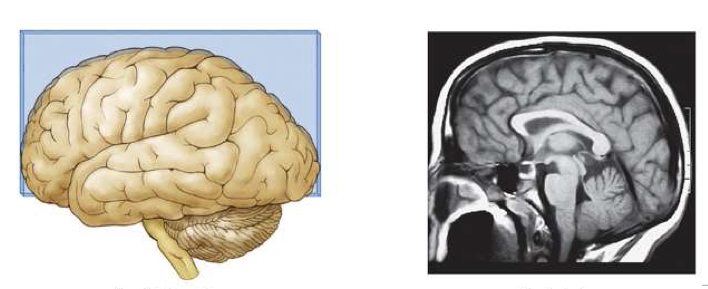Neuropsychology Terms
1/82
Earn XP
Description and Tags
Do we really need to know about: - Pierre Flourens, Paul Broca, Franz Josef Gall, rough brain anatomy with anki
Name | Mastery | Learn | Test | Matching | Spaced |
|---|
No study sessions yet.
83 Terms
What are the 4 main functions of the brain?
Voluntary Movement: Self-generated actions driven by the brain (deliberate movements and “emotional” reactions)
Perception: What we consciously perceive (Not what we subconsciously sense)
Homeostasis: Process of maintaining healthy internal conditions.
Cognition: Also known as abstract or higher functions
Explain the difference between Biopsychology and Neuropsychology.
Biopsychology focuses on the biological bases of behavior, exploring how the brain and nervous system influence thoughts and actions, while neuropsychology specifically studies how brain injuries and diseases affect cognitive functions and behaviors.
Biopsychology → Broad, experimental (e.g., studying how stress affects brain chemistry).
Neuropsychology → Applied, clinical (e.g., diagnosing Alzheimer’s using cognitive tests).
What is Neuropsychology?
It is the scientific study of the relationship between behavior and the brain.
It draws from multiple disciplines including anatomy, biology, pharmacology, and philosophy.
Neuropsychological investigations provide experimental results that can help identify impairments from traumatic brain injuries.
What are the two core ideas influencing neuropsychological investigations of brain function?
The brain is the source of behavior.
The unit of brain structure and function is the neuron.
What two core ideas influence experimental and theoretical investigations of the brain function?
The Brain Theory
The Neuron Theory
What is the Brain Theory?
The brain is the source of behavior.
What is the Neuron Theory?
The unit of brain structure and
function is the neuron.
The brain is composed of…?
Two symmetrical hemispheres
By what are the hemispheres connected?
The hemispheres are connected by commisures; the largest being the corpus callosum.
What is the brain according to the brain hypothesis?
The word brain comes from Old English, meaning tissue within the skull.
It consists of two symmetrical hemispheres: the right and left hemispheres.
These hemispheres are connected by commissures, with the largest being the corpus callosum.
The brain contains an inner hollow tube filled with cerebrospinal fluid (CSF).
The outer layer of the brain is wrinkled tissue called the cerebral cortex.
What is the inner hollow tube of the brain filled with?
The ventricular system is filled with cerebrospinal fluid (CSF).
What is the outer layer of wrinkled tissue known as?
The outer layer of wrinkled tissue, known as the cerebral cortex, is involved in many high-level brain functions like thinking, perception, and planning.
What are gyri in the cerebral cortex?
These are the raised, ridged portions or "bumps" on the surface of the cerebral cortex. They increase the surface area of the brain, allowing more neurons to fit inside and enhancing brain function.
What are sulci in the celebral cortex and what are they important for?
These are the grooves or indentations between the gyri. They help to create the folds and are important for organizing the brain's structure.
What are fissures in the celebral cortex?
Fissures are larger, deeper sulci that separate major regions of the brain.
What is the longitudinal fissure?
The longitudinal fissure is the deep groove that divides the brain into the left and right hemispheres.
What is the lateral fissure?
The lateral fissure, or Sylvian fissure, separates the temporal lobe from the frontal and parietal lobes of each hemisphere.
How many lobes are there in the cerebral cortex? Where do they lie?
There are four lobes in the cerebral cortex: frontal, parietal, temporal, and occipital. (use right fist for memory)

What is the function of the frontal lobe?
The frontal lobe is responsible for higher cognitive functions such as reasoning, problem-solving, and planning, as welll as motor control and regulation of emotios.
What is the function of the parietal lobe?
The parietal lobe processes sensory information such as touch, temperature, and pain, and is involved in spatial awareness and coordination.
What is the function of the temporal lobe?
The temporal lobe is involved in processing auditory information, memory, and emotions. It also plays a role in language comprehension.
What is the function of the occipital lobe?
The occipital lobe is primarily responsible for visual processing and interpreting visual information from the eyes.
How are the emotional functions of the frontal lobe and temporal lobe different?
The frontal lobe regulates and controls emotions, ensuring emotional responses are appropriate and controlled. In contrast, the temporal lobe is responsible for emotional processing and experience, including recognizing emotions and linking them to memories.
What part of the temporal lobe is primarily responsible for emotional processing?
The amygdala in the temporal lobe is primarily responsible for processing emotions such as fear, aggression, and pleasure.
What part of the frontal lobe is responsible for controlling emotional responses?
The prefrontal cortex within the frontal lobe is responsible for regulating emotional responses, impulse control, and social appropriateness.
What do lobes define?
Broad divisions of the cerebral cortex.
What lobe do the fingers on your right fist represent?
Frontal Lobe (left hemisphere)
What lobe do the knuckles on your right fist represent?
Parietal Lobe (left hemisphere)
What lobe does the wrist on your right fist represent?
Occipital Lobe (left hemisphere)
What lobe does the thumb on your right fist represent?
Temporal lobe ( left hemisphere)
Into which three, progressively more complex than the other, divisions can you divide the brain?
Forebrain
Brainstem
Spinal Cord

What is the forebrain known for?
Cerebral Cortex
higher functions like thinking, perception, planning
What is the Brainstem known for?
Underlying tube (of the forebrain)
Regulatory and movement-producing functions
What is the Spinal Cord known for?
connected to brainstem and descends down the back
Conveys sensory info to the brain and sends commands from the brain
telling muscles to move
What is the Peripheral Nervous System? (PNS)
Nerves outside the brain and spinal cord that connect the CNS (Central nervous system) to the body.
What are the two major divisions of the nervous system?
Central Nervous System (Brainstem& Spinal Cord)
Peripheral Nervous System (Automatic Nervous System & Somatic Nervous System)
What is the main difference between these two major divisions in the nervous system?
CNS is better protected than PNS (skull and CSF) and cannot regenerate after damage like PNS.
What are the two main components of the Peripheral Nervous System (PNS)?
The Somatic Nervous System (SNS) and the Autonomic Nervous System (ANS).
Job of Somatic Nervous system?
controlling voluntary movements by transmitting sensory and motor signals to and from the skeletal muscles through the cranial and spinal nerves.
Main difference between Sensory & Motor pathways in the SNS context?
Sensory Pathways (Afferent): collect information from senses & send it to cortex via SNS. Body to Brain
Motor Pathways (Efferent): Carry motor commands from the CNS to skeletal muscles to control voluntary movements. Brain to Body
Job of Autonomic Nervous System?
controlling involuntary functions by regulating the activity of internal organs like the heart, lungs, and stomach through both parasympathic and sympathetic nerves.
What is the Neuron Hypothesis saying?
Neurons are discrete, autonomous cells that interact but are not physically connected.
Neurons send out electrical signals that have a chemical basis.
Neurons communicate with each other via a chemical signal, known as neutransmitter.
How many Neurons are there, where are they located and what’s their function?
85-86 billion
in CNS
acquire information, process information, and act on information
Major parts include: The cell body, dendrites, and axons
How many glia are there, where are they located, and what’s their job?
85-86 billion (same as Neurons)
in CNS
help neurons, hold them together
carry out supportive functions: Deliver nutrients, removing waste
What are the major parts of a neuron and what do they look like?
1-many dendrites (tree like+ several millimeters)
Cell body SOMA (middle dot)
1 only Axon (cable like + can extend to 1m)

Job of Dendrites & Axon in the Neuron?
They enlarge the cell’s surface area to increase its interactions with other cells.
Definition & Difference of/between Cranial Nerves & Spinal Nerves:
Cranial and spinal nerves are the physical nerves that carry the sensory and motor pathways
Cranial Nerves: emerge directly from the brain and mainly control afferent and efferent functions of the head and neck. 12 pairs; 2 sets left & right
Spinal Nerves: originate from the spinal cord and connect the rest of the body to the brain, carrying sensory input to the CNS and motor output to muscles.
What are parasympethic nerves?
Part of the autonomic nervous system. Use sensory and motor pathways to control different reactions for organs
Activates your body in stressful situations.
Speeds things up: 💓 heart rate, 😤 breathing, 🩸 blood flow to muscles.
Prepares you to run, fight, or react quickly.
Example: When you're scared or anxious before an exam or during danger.
FIGHT OR FLIGHT
What are sympathetic nerves?
Part of the autonomic nervous system. Use sensory and motor pathways to control different reactions for organs
Calms your body down after stress.
Slows things down: 🧘♀ heart rate, 💨 breathing.
Helps with digestion, healing, and relaxation.
Example: After eating a meal or when you’re chilling on the couch.
REST & DIGEST
What does the concept of ‘Localization of Function’ imply in neuropsychology?
It is the idea that specific brain areas are responsible for specific psychological functions.
What is Broca’s Area and what condition results from damage to it?
Broca’s Area is the anterior speech region of the brain located in the left frontal lobe.
Damage to this area causes Broca’s Aphasia, a condition where speech production is impaired despite comprehension being mostly intact.
What is meant by ‘Lateralization’ in the brain?
Lateralization refers to the idea that certain functions are more dominantly performed by one hemisphere of the brain, such as language primarily in the left hemisphere.
What did Pierre Flourens contribute to the understanding of brain plasticity?
Pierre Flourens (1794–1867) conducted experiments by removing parts of the cortex in animal brains and observed behavior changes.
His findings:
Suggested no specialization in the cortex for specific functions.
Showed specialization for the brainstem.
Found that removing the cortex reduced all functions somewhat, rather than eliminating one specific function.
How did Friedrich Goltz support Flourens’ findings and challenge localization theory?
Friedrich Goltz confirmed Flourens’ work in 1892 using dogs:
Demonstrated that the remaining brainstem could compensate for the removed cortex.
His findings refuted strict localization of function and questioned the dominant role of the cortex.
What is the difference between anatomical directions and brain planes (slices)?
Anatomical directions tell us where something is in the brain (e.g., front, back, top).
Brain planes (slices) show how the brain is cut for viewing (like in an MRI).
🧠 Directions = Location
✂ Planes = How we look inside
Why do we use different directional terms for the brain and body in humans?
Because the human brain bends forward over the spine (90°), requiring different terms to describe directions accurately.
Why do animals use the same directional terms for body and brain?
Animals have a straight spinal and brain axis (no 90° bend), so rostral/caudal/dorsal/ventral apply to the whole body.
Why does the human brain need three directional axes?
Because of its forward bend, we need rostral-caudal (front-back), dorsal-ventral (top-bottom), and medial-lateral (middle-side) to describe it in 3D.
What does "anterior" mean in the human body?
Front side (toward the belly or face).
What does "posterior" mean in the human body?
Back side (toward the spine).
What does "superior" mean in the human body?
Toward the head (top).
What does "inferior" mean in the human body?
Toward the feet (bottom).
What does "medial" mean?
Toward the middle of the body or brain.
What does lateral mean?
Toward the sides (away from the midline)
What does rostral mean in the human brain?
Toward the forehead (front of the brain)
What does caudal mean in the human brain?
Toward the back of the head (back o the brain)
What does dorsal mean in the human brain?
Toward the top of the brain
What does ventral mean in the human brain?
Toward the bottom of the brain (toward the neck)
In animals, what does rostral mean?
Toward the nose or beak.
In animals, what does caudal mean?
Toward the tail
In animals, what does dorsal mean?
Toward the back (spine side)
In animals, what does ventral mean?
Toward the belly

What is this brain plane called?
Coronal Section
A cut from side to side showing the brain from the front.
like looking at a face

What is this brain plane called?
horizontal section
A top-down cut showing the brain from above
like slicing a hamburger bun

What is this brain plane called?
Sagittal Section
A cut from front to back in the middle, showing the brain from the side
like a profile view
What does "ipsilateral" mean in brain anatomy?
It means a structure is located on the same side of the brain.
What does "contralateral" mean in brain anatomy?
It means a structure is located on the opposite side of the brain.
What does "bilateral" mean in brain anatomy?
It means a structure is present in both hemispheres of the brain.
What does "proximal" mean in brain anatomy?
It means two structures are located close together.
What does "distal" mean in brain anatomy?
It means two structures are located far apart.
What does "afferent" mean in the nervous system?
Afferent is a direction & means moving toward the brain or spinal cord. It describes sensory pathways that bring information into the brain.
What does "efferent" mean in the nervous system?
Efferent is a direction & means moving away from the brain or spinal cord. It describes motor pathways that send signals out to the body.
What are the main functional divisions of the nervous system?
Central nervous system (brain & spinal cord)
PNS:
Somatic nervous system (cranial & spinal nerves for voluntary movement),
Autonomic nervous system, which splits into:
Sympathetic division (activates body functions like fight-or-flight)
Parasympathetic division (calms the body and conserves energy)